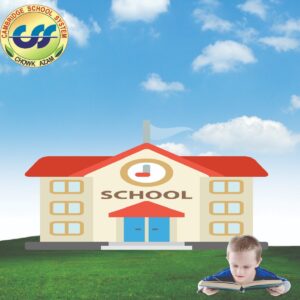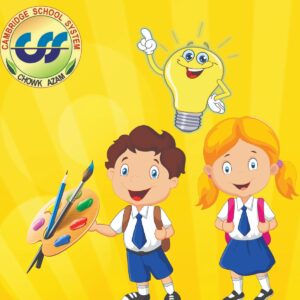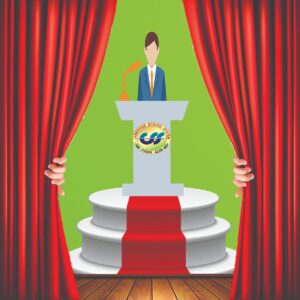Learning
The fourth annual symposium of the Gulf Comparative Education Society GCES took place from March 16 to 18 at the Sheikh Saud Bin Sadr Al Qasimi Foundation for Policy Research, and in partnership with the Learning Sultan Qaboos University. Organized around the theme Bridging the Policy/Research Divide in Education in the GCC, the symposium was conducted at the Sultan Qaboos University in Oman. It was made up of a pre-conference workshop one, keynote address, three featured panels, and 20 breakout sessions with a combined total of over 70 presentations by both invited speakers and those who submitted abstracts.
The speakers represented a diverse array of countries, school, high school, education, private school, higher education, including the United Arab Emirates, Oman, Bahrain, Qatar, and Switzerland England, Australia, Germany, and the United States were representing various voices in the educational sector, including policymakers, academics and researchers, providers and leaders of schools, consultants, and teachers.
This year’s GCES symposium aimed to analyze the possibility of policymakers within the Gulf region to formulate evidence-based policies through the application of local research in the educational sector, with an emphasis on the potential and potentiality of comparative education research to policy formulation. Giving the keynote speech on the interconnectedness between educational research, policy, and practice was Professor Fernando Reimers.
It comes as no surprise that interested and motivated students are enthusiastic and motivated learners. An exciting and alternative school environment with a chance to be successful sparks internal motivation. This is far less likely in a traditional curriculum designed around mass learning, where struggling students are compelled to continue running into things that they cannot do five days a week.
Learning Interests
Unconditional acceptance of the individual Learning and relief from the performance culture of school enable students to find out what they can do. As Davies, Lamb, and Docked note, disengaged learners need to have their learning interests recognized. Key strategies found for successful programs include making learning experiential or practical making learning flexible options available, working on literacy and numeracy skill development needs and providing programs that incorporate technologies. Young Australian early school leavers surveyed on what could have kept them at school, made returning more feasible recognized supportive staff relationships, learning outside the classroom, and more applied practical alternatives earlier in school courses as being central.
Developing a supportive atmosphere that assists in fostering the self-confidence of vulnerable youth so they feel confident to learn and succeed at school is the main focus of the Australian school engagement strategy, Hands On Learning HOL. Providing children with new experiences and the chance to learn alongside mentors they feel comfortable with encourages an I can do and ignites the fire for learning.
styles, written off too early and not permitted to succeed and develop their potential. No lengthy instructions or complex technologies, simply a chance to do so under expert guidance. And the responses of the students were highly positive, as achievable and manageable tasks developed self-confidence and a positive self-concept.
Developed
The HOL approach has Learning developed and been honed over the past 15 years, but everything has remained fundamentally the same. It gives one day away from the classroom to transform the experience of school for disaffected students without. HOL assists young people to stay at school and address new things that they had no confidence to try before, yet stay linked to the mainstream curriculum. This opens up and widens what goes on at school and provides struggling students with the confidence and chance to begin succeeding and achieving success.
Learning Culture
School leadership assistance, Learning advanced implementation, and connecting schools with parents and communities cultivate the best conditions for HOL to be most effective. Progressive school leadership groups know and respect the varied needs of their students, providing greater opportunity for all students to thrive and creating better results throughout the whole school. Focusing on the supportive student-teacher Relationships and small group learning promoted by HOL assist in revolutionizing class dynamics and developing a positive learning culture throughout the whole school that is beneficial to everyone.
While being conceptually straightforward, HOL is demanding in its implementation. Staff recruitment, staffing of the student group, and choosing projects is a fine blend that requires skill to get the balance right.
HOL artisan-teachers are highly respected community leaders with varied skills that include adaptability and tolerance, and the practical skill of encouraging active participation by working in collaboration with students.
Student groups must be well constructed across age and gender, and balanced to prevent too many
disruptive, challenging pupils from being all together in the same group. Projects chosen should be engaging and creative,
not overly complex or too technically demanding at the beginning, with a graduated capacity to engage that will not overpower pupils.
Performing school systems
The highest-performing Learning school systems in countries reduce the gap between their disadvantaged and better-off students’ achievements. Allowing for the provision of enriching school experiences for everybody and securing that struggling students receive early intervention decreases educational failure and improves the capacity of more young people to participate and contribute to society. Students in Finland perform better and are less influenced by their home
background than the OECD average OECD, 2012. Notably, the focus on developing wellbeing and happiness and promoting caring environments for all students, so characteristic of the Finnish education system, reflects the philosophy of HOL Stahlberg 2011.
The OECD 2012 now considers the evidence that equity in education is worth it as conclusive and that “in such education systems, the vast majority of students can achieve high-level skills and knowledge that rely on their aptitude and motivation, rather than on their socio-economic background. Shifting the school experience to be more diverse education portal, AI in education, and personalized learning, reflecting current and resemble real life encourages more opportunities for success and will enable more students to be unleashed to their potential, instead of some continuing to fail. More and more, there is a one size fits all and the belief that students fail due to individual frailty.
CONCLUSION
In conclusion, the knowledge Learning that can enable us to close education equity gaps is knowledge that is relevant to clear purposes, and that demonstrates clear thinking regarding the relationship of schools to social institutions and regarding how the acquisition of cognitive, emotional, and social abilities enables individuals to become self-authoring adults and productive members of their communities. This knowledge should be in the general areas of investigating the linkage of schools to their environment, investigating the operation of schools,
Investigating the effects of school programs, investigating the process of school innovation and change, and the role of school leadership in this
process. Such knowledge must be based on a plurality of disciplinary and methodological streams and be the basis for a process of design and implementation of interventions that will transcend the mechanical adoption of these research results.
There are grounds to be optimistic about the possibility of concerted efforts to bring about educational inclusion, since much has been gained since these comparatively recent innovations we refer to Schools became generally available to the majority of the world’s children. To continue making headway in creating knowledge and applying what has been called know-how to further deepen and widen human talent development is one of The most thrilling opportunities of our era.




